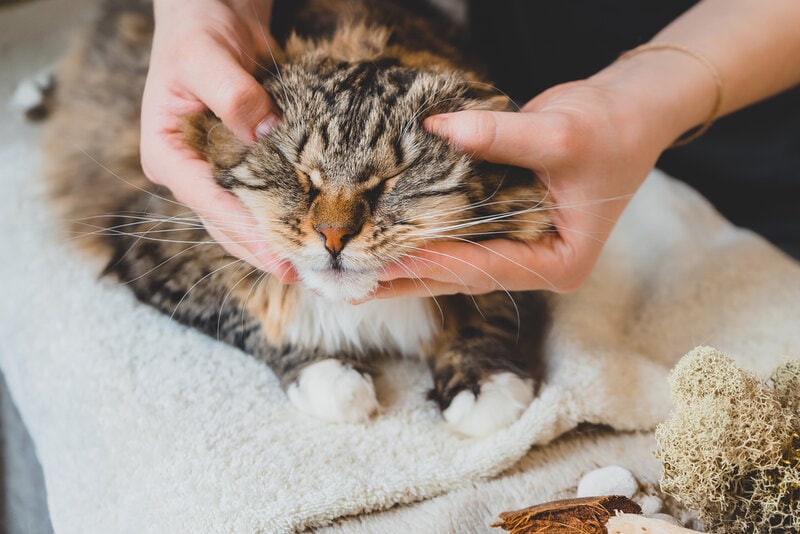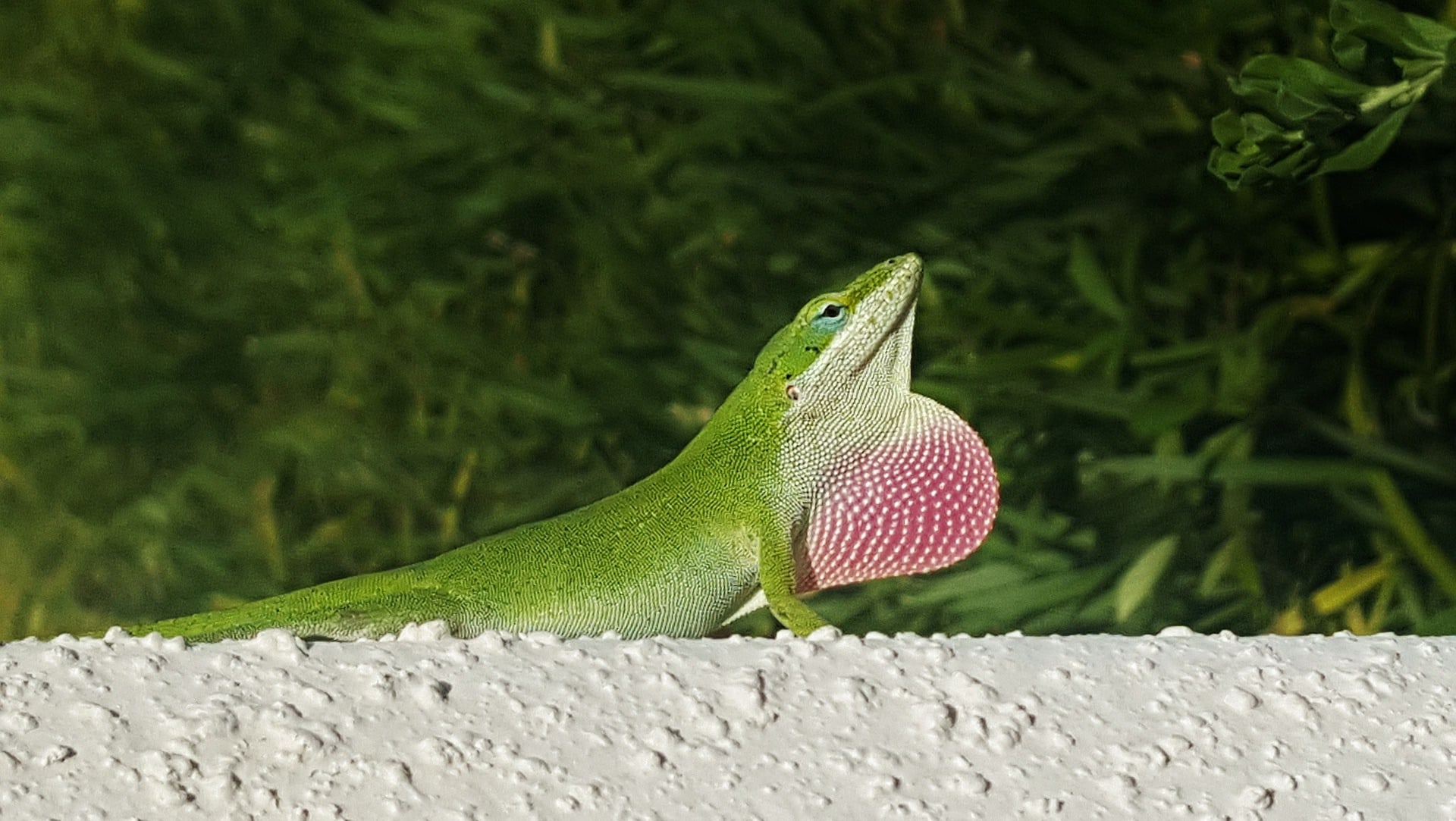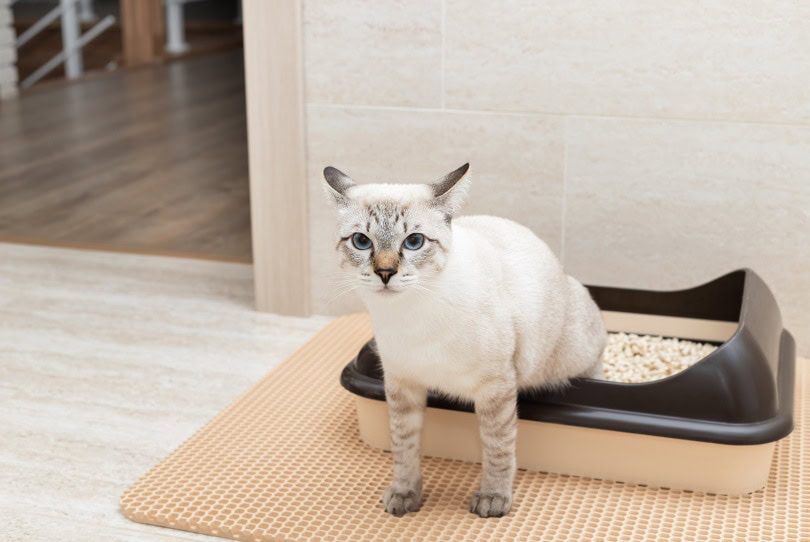VET APPROVED

The information is current and up-to-date in accordance with the latest veterinarian research.
Learn more »Click to Skip Ahead
Every cat owner likes to give their cat one-on-one attention. It’s a great way to strengthen the bond between you and your pet while also providing them with much-needed stress relief. A cat massage achieves both of these things, as it can have a positive impact on your cat’s health, well-being, and happiness. The benefits of giving your cat a massage are numerous. It can help reduce stress, increase blood circulation, relieve pain and tension in their muscles, improve lymph flow, and may release endorphins, or pleasure hormones.

How to Give a Cat Massage
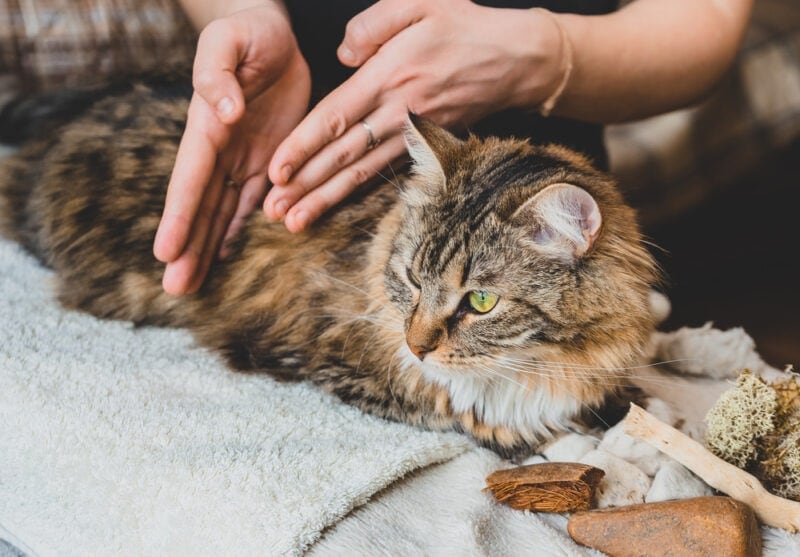
Before embarking on cat massage, you should learn how to do it properly. While it might seem a bit silly, there are a few things to keep in mind. Following these steps will help your cat receive the most benefits from the massage:
- Use fingertips and apply mild pressure to make slow-motion strokes beginning at your cat’s head, combined with gentle petting.
- Observe your cat’s body language and stop if they are feeling uncomfortable or they decide to walk off.
- If your cat is enjoying the gentle strokes, continue down to their back.
- Continue to your cat’s belly if this is an area they enjoy having touched, otherwise, skip it.
- Use two fingers to stroke under your cat’s chin. Repeat strokes from the throat to the chin. Rub the chin in a circular fashion.
- Go down the limbs, if your cat tolerates this.
- Blinking, purring, sleeping, or drooling indicates that your cat is relaxed.

The 4 Tips for Massaging Your Cat
1. Be gentle and slow
Using your fingertips allows you to maintain a comfortable amount of pressure which helps keep your cat at ease. You don’t want your cat to feel restrained, and you don’t want to accidentally grip them so hard that it causes pain. Be gentle and proceed through various areas of their body slowly, so they get a chance to get used to different sensations.
2. Stay behind your cat’s head
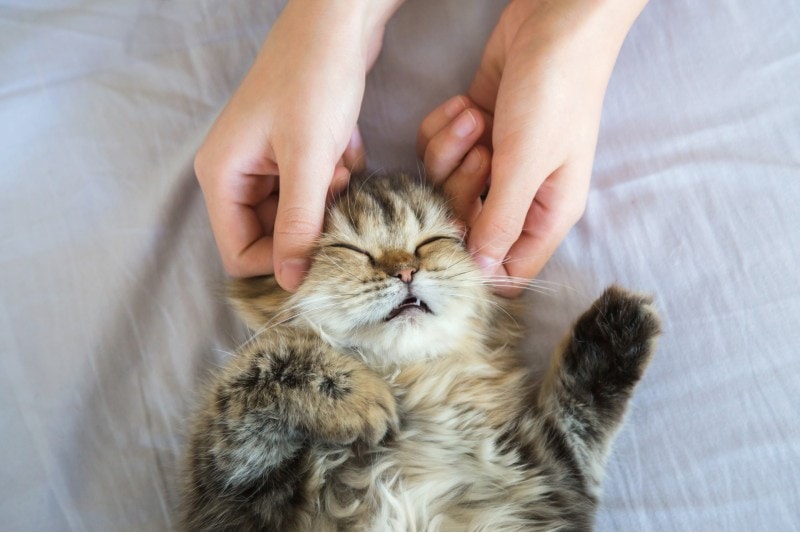
This isn’t to avoid getting scratched (though it will serve that function), but so you don’t press too hard and make your cat uncomfortable.
3. Be mindful of your cat’s body language
If your cat is squirming or clearly uncomfortable, ease up or stop altogether. The point of cat massage is to help your kitty relax, so if they don’t like something, let them go and try another time again with a more gentle approach.
4. Always end on a positive note
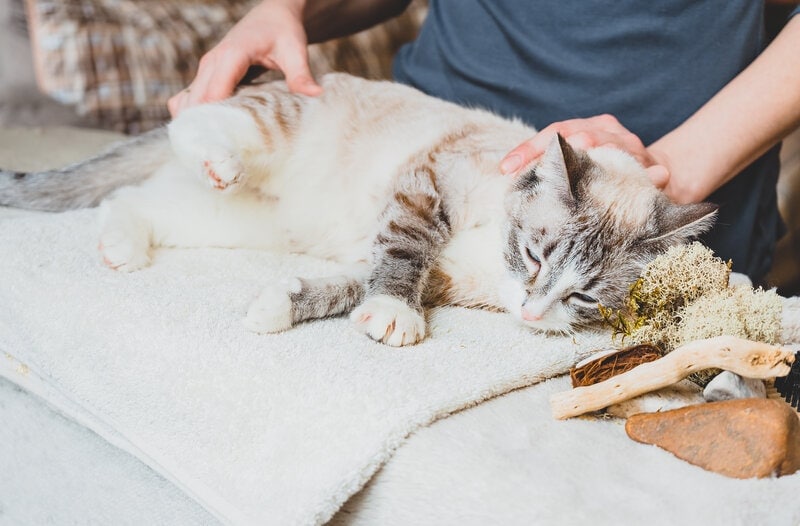
Cats are creatures of habit, but it can take them a while to get used to new things. Start slowly, and always end your massage session with something that your cat loves, whether it’s a head scratch, a favorite toy, or a treat.

Why You Should Massage Your Cat
There are many great reasons to massage your cat. For one, it provides you with one-on-one bonding time, but it also offers health benefits for both of you.
- Massaging or petting your cat for 10 minutes reduces human stress levels and reduces the amount of cortisol in your body.
- Giving your cat a massage can enable you to detect scratches, wounds, or areas of pain in your cat that you might not find otherwise. You may find a small health problem before it becomes a big one.
- Stroking your cat helps improve circulation and lymph flow, reduces pain and inflammation, and helps your cat relax.
As another option, if you're looking to give your cat something exciting, we know of an awesome scratcher that both encourages play and doubles as a stylish modern furniture piece. The Hepper Hi-Lo Cat Scratcher is designed with a curved shape for dynamic movement, is built to last with safe and sturdy birch plywood and thick cardboard, and offers three height options to ensure your cat enjoys the exercise, elevation, and excitement they crave ... and, it's affordable!
At PangoVet, we've admired Hepper for many years, and decided to take a controlling ownership interest so that we could benefit from the outstanding designs of this cool cat company!
Different Ways to Massage Your Cat
Since every cat is different, you may need to experiment with different types of massage.
- Brush massage — This is great for cats that like being brushed. It can help remove loose hair and distribute oils through their fur.
- Simple stroke – This technique comes down to petting your cat, wherever they enjoy, feeling for any areas that hurt, any lumps or skin changes while getting your cat relaxed.
- Effleurage stroke – This type of gentle gliding therapeutic massage should only be performed if your cat enjoys it and if you’re comfortable with the technique. It involves starting from a cat’s paw and lower limb, gently stroking towards the body, while enclosing the leg with your palm and not losing contact with the limb during the stroke. This may decrease pain and swelling, warming the tissue but it can be uncomfortable for some cats if too much pressure is applied.
- Compression and kneading – This technique is more complex and usually performed by a trained massage therapist. It’s used on muscles in the body, in order to provide relaxation, improve mobility and lymph drainage, and reduce pain. Muscles are compressed and released using fingertips, palms, or the back of the hand.
- Friction – Using this technique, a small circular motion is repeated on the desired area using fingertips or thumbs, in order to create heat, relax muscles, improve blood flow, and break down any adhesions.
- Passive stretching – If your cat has been injured or has a mobility issue, your vet may recommend you perform some passive stretching at home, alongside regular physiotherapy with a professional. This involves gently moving the joints in their natural directions while supporting them. Make sure your cat is comfortable as fresh injuries may still be too painful to perform this at home.


Conclusion
Cats are beautiful animals that deserve to be treated with love. Giving your cat a massage is a great way to bond with them and help reduce their stress. It can also help reduce anxiety, improve circulation and lymph flow, as well as relax muscles, and ease pain. Every cat is different, though, so read their cues and take things slowly. They’ll be sure to tell you what they enjoy and what they don’t. You may have to try a few different techniques before finding one that works well for both of you.
Featured Image Credit: Ekaterina Kuzovkova, Shutterstock
